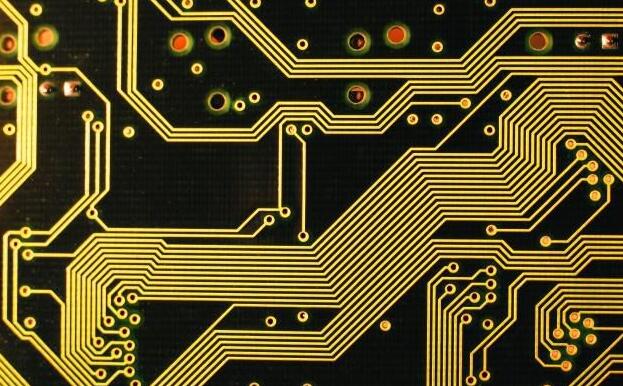怎麼做 印刷電路板 控制阻抗?
隨著 印刷電路板 訊號切換速度, 今天的 印刷電路板 規劃製造商需要瞭解和控制 印刷電路板 踪迹. 與現代數位電路中較短的訊號傳輸時間和較高的時鐘頻率相對應, 印刷電路板 軌跡不再是簡單的連接, 但是輸電線路.
在實踐中, 當數位邊緣速度高於1ns或類比頻率超過300Mhz時,有必要操縱軌跡阻抗. a的關鍵參數之一 印刷電路板 trace is its characteristic impedance (那就是, 這個 ratio of voltage to current when the wave is transmitted along the signal transmission line). 印刷電路板上導體的特性阻抗是電路板規劃的重要名額, 尤其是在 印刷電路板 高頻電路規劃, 有必要考慮導體的特性阻抗和設備或訊號所需的特性阻抗是否共同,以及它們是否匹配 . 這涉及兩個概念:阻抗操作和阻抗匹配. 本文的重點是對阻抗操作和堆棧規劃問題進行評論.

Impedance control
Impedance control (eImpedance Controling), 電路板中的導體將傳輸各種訊號. 為了提高其傳輸速率, 有必要新增其頻率. 阻抗的變化將導致訊號失真. 因此, 高速電路板上導體的阻抗值應控制在一定範圍內, 這被稱為“阻抗控制”.
感測器的阻抗 印刷電路板 軌跡將由其電感和電容電感確定, 電阻和電導率. 影響阻抗的主要因素 印刷電路板 痕迹是:銅線的寬度, 銅線的厚度, 介質的介電常數, 介質的厚度, 襯墊的厚度, 地線的路徑, 和電線周圍的接線. 範圍 印刷電路板 阻抗為25至120歐姆.
在實踐中, the 印刷電路板 傳輸線通常由導線軌跡組成, 一個或多個參攷層和絕緣材料. 軌跡和電路板層構成控制阻抗. 這個 印刷電路板 通常會選擇多層結構, 控制阻抗也可以用各種管道構造. 然而, 無論使用何種方法, the impedance value will be determined by its physical structure and the electrical characteristics of the insulating 材料:
The width and thickness of the signal trace
The height of the core or pre-filled 材料 on both sides of the trace
Trace and layer configuration
Insulation constant of core and pre-filled 材料
There are two main forms of 印刷電路板 傳輸線:微帶和帶狀線.
Microstrip:
A microstrip line is a ribbon wire, 它是指只有一側有基準面的傳輸線. The top and sides are exposed to the air (coating layer can also be applied), 它位於絕緣常數電流互感器電路板的表面. 參攷電源或接地層. As shown below:
Note: In practical 印刷電路板製造, 紙板廠通常在 印刷電路板 塗上一層綠油. 因此, 在實際阻抗計算中, the model shown in the figure below is generally used for the calculation of the surface microstrip line:
Stripline:
Strip line is a strip wire placed between two reference planes. 如下圖所示, 由H1和H2表示的電介質的介電常數可以不同.
以上兩個例子只是微帶線和帶狀線的典型演示. 有許多類型的特定微帶線和帶狀線, 例如塗層微帶線, 與特定 印刷電路板 層壓結構.
用於計算特性阻抗的方程需要複雜的數學計算. 通常地, 採用現場求解方法, 其中包括間隙元素的分析. 因此, 使用專用阻抗計算軟件SI9000, what we need to do is to control the parameters of the characteristic impedance:
The dielectric constant Er of the insulating layer, 佈線寬度W1, W2 (trapezoid), 佈線厚度T和絕緣層厚度H.
Explanation on W1 and W2:
The calculated value must be within the red box. 其他條件可以通過類比推導得出.
The following uses SI9000 to calculate whether the impedance control requirements are met:
First, calculate the single-ended impedance control of the DDR data line:
TOP layer: the copper thickness is 0.5盎司, 軌跡寬度為5MIL, 與基準面的距離為3.8英里, 介電常數為4.2. 選擇模型, 替換參數, 並選擇無損計算, as shown in the figure:
Coating indicates the coating layer. 如果沒有塗層, fill 0 in thickness and 1 (air) in dielectric (dielectric constant).
基板表示基板層, 那就是, 電介質層, 一般選擇FR-4, 通過阻抗計算軟件計算厚度, 介電常數為4.2 (when the frequency is less than 1GHz).
Click on the Weight(oz) item, 您可以設定銅板鋪設的銅板厚度, 銅的厚度决定了痕迹的厚度.
9. 預浸料的概念/Core of the insulating layer:
PP (prepreg) is a kind of dielectric 材料, 由玻璃纖維和環氧樹脂組成. 覈心實際上是一種PP型介質, 但它的兩面都覆蓋著銅箔, 而PP沒有. 製作多層板時, 通常,CORE和PP用於合作, 芯和芯與PP粘合.
10. 注意事項 印刷電路板 stack-up planning:
(1), warpage problem
The 印刷電路板層壓板 plan should be symmetrical, that is, 每層的介電厚度和銅厚度是對稱的. 拿六層板, TOP-GND和BOTTOM-POWER的介電厚度和銅厚度相同, GND-L2與L3-POWER的介電厚度和銅厚度相同. 以這種管道, 層壓過程中不會發生翹曲.
(2) The signal layer should be tightly coupled with the nearby reference plane (that is, the dielectric thickness between the signal layer and the nearby copper layer should be small); the power copper and ground copper should be tightly coupled.
(3) Under very high-speed conditions, 可以連接冗餘接地層以阻斷訊號層, 但建議不要阻塞多個電源層, 這可能會導致不必要的雜訊干擾.
(